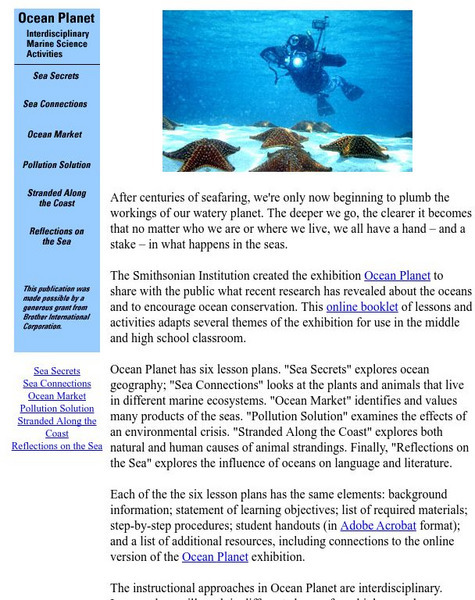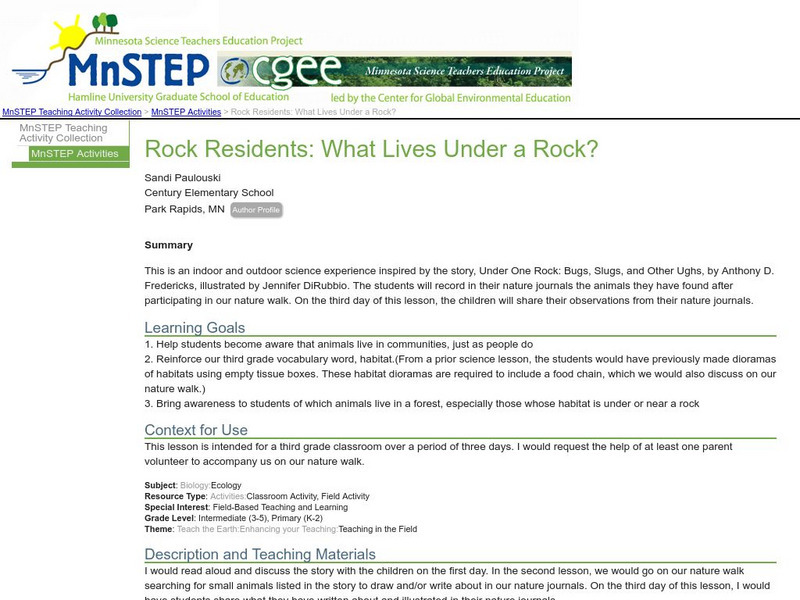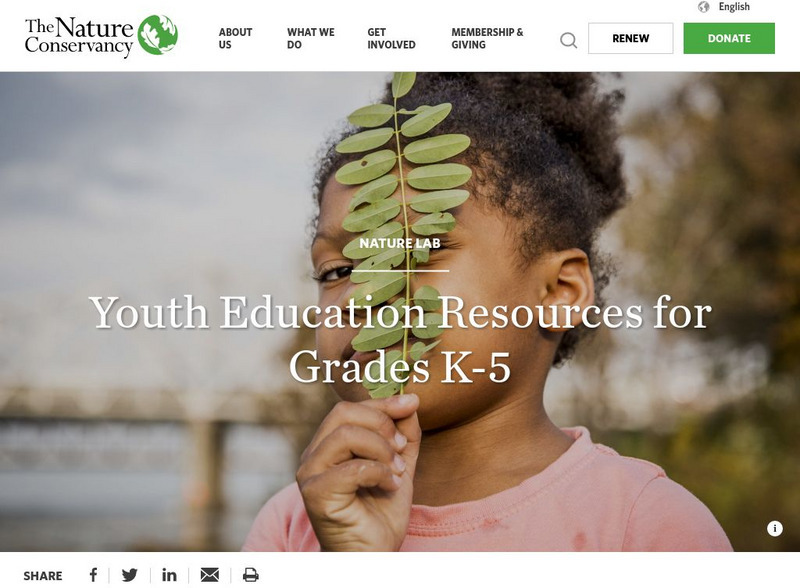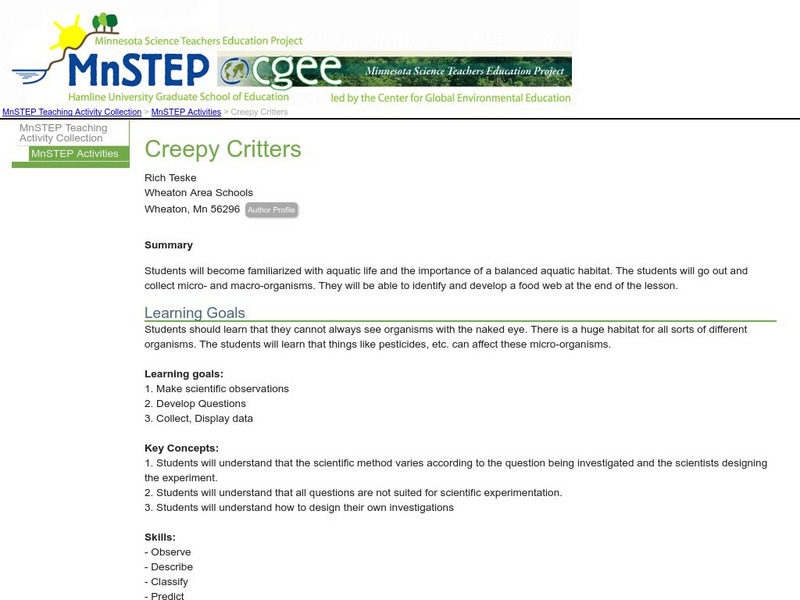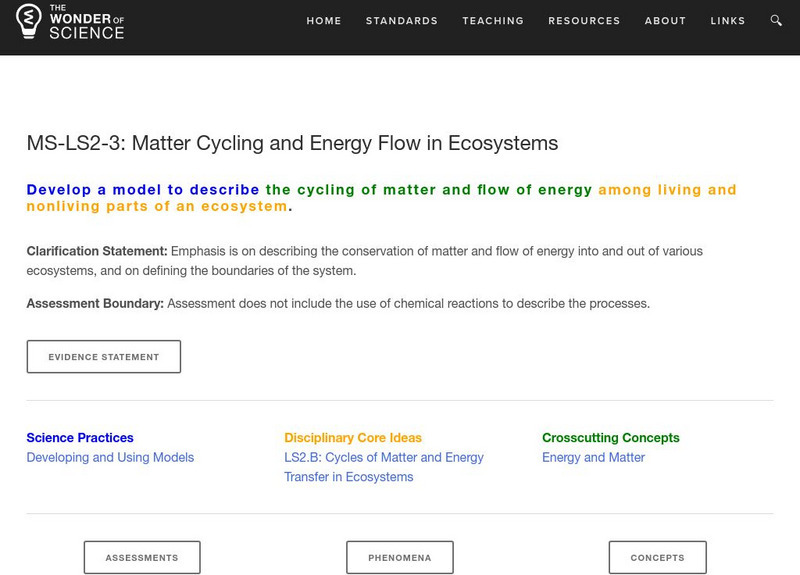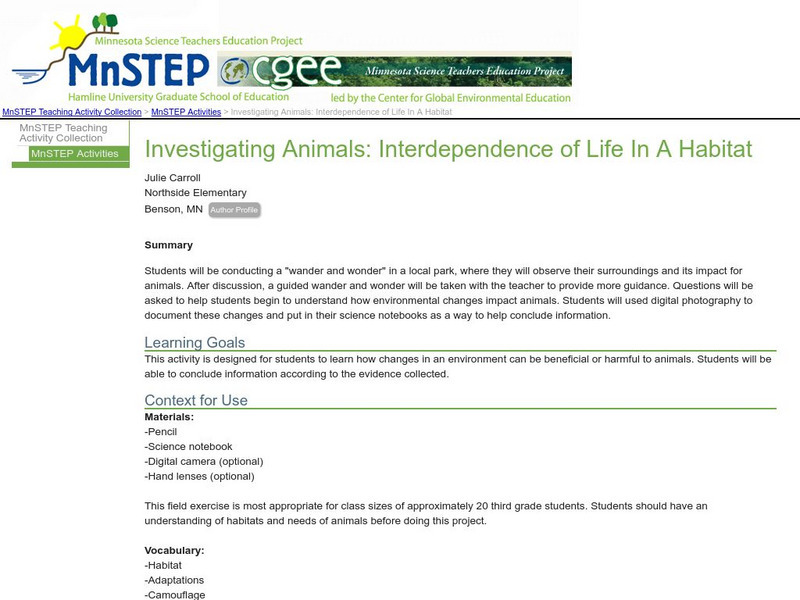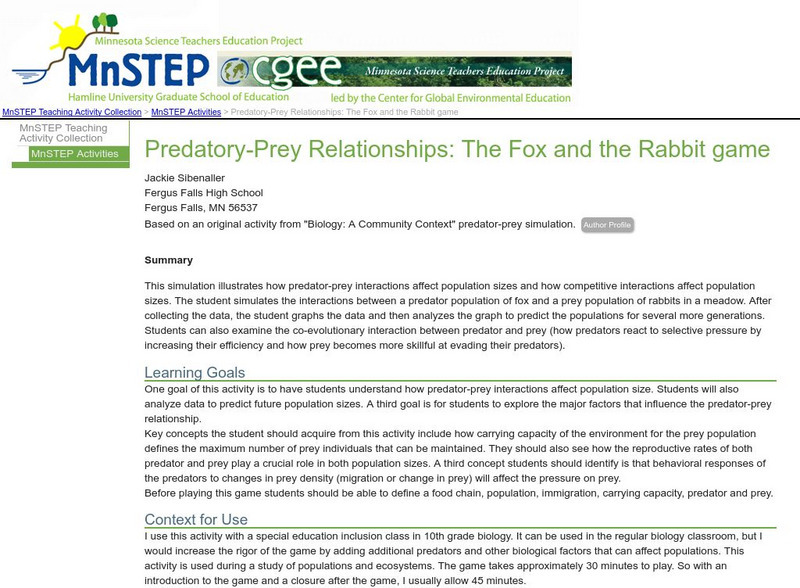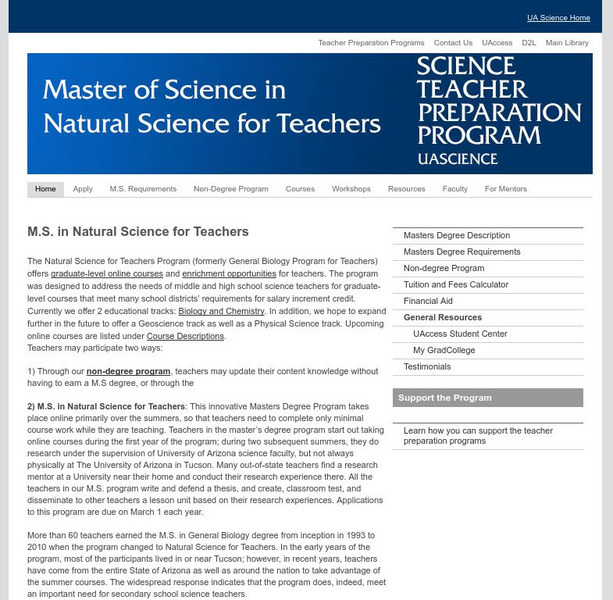Utah STEM Foundation
Utah Stem Action Center: Great Salt Lake Ecosystem
This lesson plan provides an eight-day flow of educational activities in which young scholars use the Great Salt Lake ecosystem to explore food webs and how changes in living and nonliving factors affect different populations.
Smithsonian Institution
Smithsonian Environmental Research Center: Forces of Change: Weaving the Web
The young scholars will become the food web in this fun interactive classroom activity. Detailed instructions, background information, guiding questions, and activity worksheets are provided.
OpenSciEd
Open Sci Ed: 7.4 Matter Cycling & Photosynthesis
This unit on matter cycling and photosynthesis has students investigating the idea that all food comes from plants.
Smithsonian Institution
Smithsonian Education: Ocean Planet
A series of lesson plans designed to be used with the Smithsonian Ocean Planet exhibit (available online). Lesson topics include marine ecosystems, pollution of ocean water, animal strandings, and literature.
Science Education Resource Center at Carleton College
Serc: Mn Step: Rock Residents: What Lives Under a Rock?
For this activity, students first listen to a story about animals that live under rocks, then go on an exploratory nature walk to see what animals they can find, living in their own small habitats. They write about their discoveries in a...
PBS
Pbs Teachers: Predator Protector Game Lesson
Describe the habitat, food web and ecosystem of shark species. Identify threats to sharks and explore how top predators help to maintain the balance of nature within ecosystems. This lesson plan also contains an interactive game.
Nature Conservancy
The Nature Conservancy: Gardens Activity Guide: Soil
In this lesson learners conduct a soil analysis to understand soil types and explore the relationship between the garden and healthy, fertile soil. Soil is a natural resource that is crucial to life on Earth and when managed properly, it...
Science Education Resource Center at Carleton College
Serc: Creepy Critters
Students learn about aquatic life and the importance of a balanced aquatic habitat by collecting micro- and macro-organisms. By the end of the instructional activity, they will be able to identify and develop a pond food web.
Utah Education Network
Uen: Trb 4:5 Investigation 3 Web of Life
Understand environments and how organisms adapt to their environment.
National Pest Managment Association
Pest World for Kids: Termitology
An inquiry based lesson plan that delves into termite biology, distribution and habitat, life cycle, social structure, and the role of termites in nature and the food chain.
Orca Book Publishers
Orca Book Publishers: 'Stuffed' Teaching Guide [Pdf]
This is a teacher's guide for the book Stuffed by Eric Walters. This book connects well to issues surrounding healthy eating and lifestyle, and the 2004 movie, Super Size Me. Some friends begin a boycott of a fast-food chain that spreads...
Alabama Learning Exchange
Alex: Nocturnal Animals Lesson #4: Owls
During this instructional activity, students will visit various Internet sites to learn facts about owls. They will use this information to draw a picture of the owl food chain, dissect owl pellets, and write a poem about owls.
The Wonder of Science
The Wonder of Science: Ms Ls2 3: Matter Cycling and Energy Flow in Ecosystems
Work samples, phenomena, assessment templates, and videos that directly address standard MS-LS2-3: matter cycling and energy flow in ecosystems.
Science Education Resource Center at Carleton College
Serc: Investigating Animals: Interdependence of Life in a Habitat
In this activity, students will learn how changes in nature can be beneficial or harmful to animals. At the end, students will be able to conclude information according to the evidence collected.
Science Education Resource Center at Carleton College
Serc: Predatory Prey Relationships: The Fox and the Rabbit Game
This activity helps students understand how predator-prey interactions affect population sizes and how competitive interactions affect population sizes. They will also explore the major factors that influence the predator-prey relationship.
National Institute of Educational Technologies and Teacher Training (Spain)
Ministerio De Educacion: La Dinamica De Los Ecosistemas
This unit shows how ecosystems change over time and how matter and energy, which are essential to its operation, are transformed and passed from one living thing to another forming, in some cases, authentic cycles. It contains 19...
Teacher Planet
Teacher Planet: Environment
A complete and comprehensive resource for teaching learners about the environment, ecology, ecosystems, and more.Many lesson plans, units and activities can be found here.
University of Arizona
Univ. Of Az: Spiders: An Organism for Teaching Biology
Students capture spiders and then conduct various experiments to identify their spider, analyze its feeding rate, and discover its effect on populations of insects. Includes directions for student activities and teaching tips.
Alabama Learning Exchange
Alex: What's on Your Plate?
In today's fast food world, it can be hard to make healthy eating choices. In this lesson, students will learn how they can incorporate healthy eating habits in their daily routines. They will use menus from local restaurant chains and...
Other popular searches
- Desert Food Chain
- Animal Food Chain
- Deciduous Forest Food Chains
- Pond Food Chain
- Ocean Food Chain
- Frog Food Chain
- Food Chains in Biomes
- Arctic Food Chain
- Desert Animal Food Chain
- Ocean Animals Food Chain
- Coral Reef Food Chain
- Marine Science Food Chain

